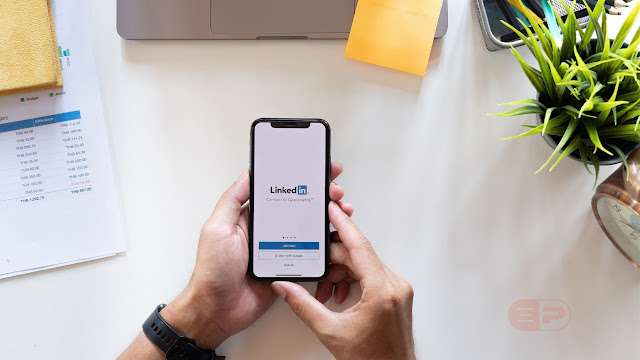Why Start from Scratch on LinkedIn ?
LinkedIn has evolved into the premier platform for professional networking, job searching, personal branding, and thought leadership. With over 1 billion users, it’s essential for career growth, especially in a job market influenced by AI tools, remote work trends, and economic shifts. Starting from scratch means creating a profile that attracts recruiters, connections, and opportunities without prior history. Based on recent guides, focus on optimization for LinkedIn’s algorithm, which prioritizes complete profiles, keywords, and engagement. Profiles that are fully optimized can see up to 21x more views.
Step-by-Step Guide to Building Your Profile:
Follow these steps to set up a compelling profile. Use AI tools like for drafting sections with the prompts provided below.
1.Create Your Account (Basics):
Sign up at linkedin.com using a professional email. Choose a custom URL (e.g., linkedin.com/in/yourname-profession). Enable two-factor authentication for security. If you’re job hunting, toggle “Open to Work” – use the green banner publicly for entry-level roles (boosts recruiter messages by 40%) or recruiter-only for senior positions to avoid appearing desperate.
2. Profile Picture
Upload a high-quality, professional headshot: clear, well-lit, recent, with your face filling 60% of the frame. Smile naturally, dress for your industry (e.g., business casual for tech), and use a neutral background. Avoid selfies, group photos, or distractions – profiles with photos get 14x more views.
AI Prompt: “Suggest ideas for a professional LinkedIn profile photo for a [your profession] in [industry]. Include tips on lighting, background, and attire.”
3. Banner (Background Image):
Add a custom banner (1584×396 pixels) that reflects your brand – include your tagline, skills, or industry visuals. Tools like Canva can help design it.
AI Prompt: “Design a LinkedIn banner that reflects my expertise in [industry]. Include a professional theme with [keywords, icons, or visual elements related to my field].”
4. Headline:
Limit to 220 characters; go beyond your job title to include keywords, value, and achievements (e.g., “Cloud Engineer | Cut AWS costs by 45% for SaaS startups | DevOps Expert”). This appears in searches, so use industry terms for SEO.
AI Prompts:
– General: “I am a [profession] with expertise in [skills]. Craft a LinkedIn headline that communicates my ability to [specific value].”
– Job Seekers: “Craft a headline positioning me as an ideal candidate for [role], including keywords like [terms].”
5. About Section (Summary):
Write a 3-5 paragraph overview (up to 2,600 characters) telling your career story, skills, motivations, and a call-to-action (e.g., “Connect if you’re in tech innovation”). Make the first 3-4 lines engaging to hook viewers before the “See more” fold. Focus on achievements and passion.
AI Prompts:
– General: “Write a LinkedIn About section for a [profession] with [years] experience in [industry]. Emphasize skills, achievements, and end with a CTA.”
– Personal Branding: “Create an About section highlighting my unique value in [industry], making it conversational.”
6. Experience Section:
List roles chronologically, focusing on 3-5 bullet points per job with quantifiable achievements (e.g., “Led team to reduce deployment time by 40% via automation”). Use action verbs and keywords from job descriptions.
AI Prompts:– General: “Write an experience entry for [job title], including accomplishments like [achievements] with quantified results.”
– Sales/Marketing: “Highlight achievements in [role] such as [deals closed/revenue generated].”
7. Education Section:
Add degrees, institutions, and dates. Include relevant coursework, honors, or extracurriculars. For recent grads, emphasize projects or internships here.
8. Skills Section:
Add up to 50 skills, prioritizing 5-10 top ones (e.g., AWS, SEO). Endorse others to get endorsements back – this boosts search rankings.
AI Prompt: “Suggest a list of LinkedIn skills for [role/industry], aligned with current demands and keywords.”
9. Additional Sections: Certifications, Projects, Recommendations:
Certifications: List industry-recognized ones (e.g., AWS Certified) with dates and links.
Projects: Add portfolios or case studies with descriptions and media.
Recommendations: Request 3-5 from colleagues/managers, specifying projects for authenticity.
Enable Creator Mode if you plan to post content regularly for better visibility.
Building Your Network and Personal Brand:
Once your profile is set (aim for “All-Star” status via LinkedIn’s completeness meter), focus on growth:
Connections: Personalize requests (e.g., “Loved your post on AI – let’s connect!”). Start with 50-100 from your industry; limit to 30,000 quality ones.
Content Strategy: Post 2-3x daily – mix insights, hot takes, humor, and personal stories. Use your authentic tone of voice (TOV) to stand out; avoid AI-generated posts. Formats: Text, images, videos. Add 1-3 hashtags, but no links in posts (put in comments).
Engagement: Comment meaningfully on others’ posts (e.g., funny or insightful replies) to drive traffic. Engage with big accounts for visibility. Repost your content after a week.
Growth Tips for 2025: Test posting times; focus on moment marketing (timely trends). Build for 5+ weeks to gain followers. Use keywords everywhere for algorithm boosts.
Quick Tips Table
| Aspect | Do | Don’t |
|——–|—-|——-|
Profile Optimization | Use keywords from job postings; quantify achievements. | Use generic buzzwords like “hardworking.” |
| Content | Post consistently with personality; engage daily. | Copy AI text verbatim; post infrequently. |
|Networking | Personalize invites; comment thoughtfully. | Spam connections; ignore replies. |
| AI Usage | Refine prompts for drafts; edit for authenticity. | Rely solely on AI – add your voice. |
Track progress with LinkedIn analytics. In 2025, trends emphasize AI-assisted creation, video content, and authentic storytelling for faster branding. If job-focused, integrate with tools like LinkedIn Learning for skills.
